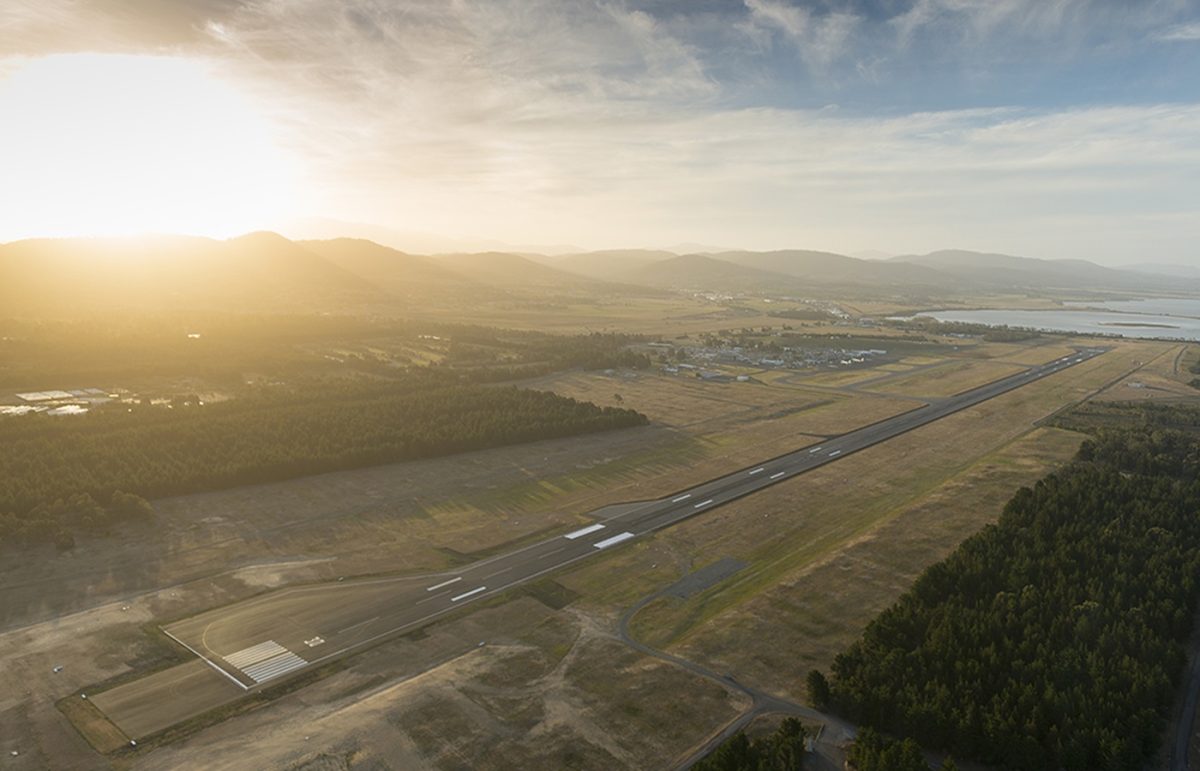
The Hobart International Airport runway has been shortened by 829 metres to allow Stage 1 upgrades, while Stage 2 improvements will be performed at night. Photo: Hobart Airport.
Work has begun on a series of upgrades to Hobart International Airport’s runway to accommodate heavier aircraft.
The $130 million project is jointly funded by Hobart Airport and the Federal Government, and is expected to be completed in May 2025.
It will involve upgrading the runway and work on taxiways, airport lighting, electrical systems and signage, to enable the airport to operate larger, long-range 300-tonne-class airliners such as the Boeing 787 and Airbus A350.
The runway will be upgraded in 80-metre sections at a time, and most of the work on the main centre section will be performed at night to avoid disrupting operations during the day, with work starting at 10 pm and finishing at 6 am.
Work also began in July on a $200 million expansion of the airport’s terminal building, which will provide more departure area and lounge space, and more outlets.
Hobart Airport CEO Norris Carter said the infrastructure project was one of Tasmania’s most complex and important, and that, when complete, would be a gateway to the world.
“Through the course of this project, we’re going to take 30,000 tonnes of old asphalt off our airfield and lay down 100,000 new tonnes of asphalt,” Mr Carter said.
“The runway will be done in three stages – first stage is the northern end. The middle stage will be the centre part of the runway, which will be done as night works. Third stage is the southern end.”
The runway has been temporarily shortened by 829 m so the first stage can be done. This provides plenty of space for domestic airliners, but has restricted the operations of flights to Antarctica for the Australian Antarctic Division until the end of the year.
“They can’t use it ahead of Christmas, they’ll be able to use it after January,” Mr Carter said. “They’ve accepted that. They’ve got some alternative arrangements in place, so using Launceston and Avalon airports. But as they said, it’s a little bit of short-term pain for long-term gain.”
Federal Infrastructure, Transport, Regional Development and Local Government Minister Catherine King said the upgrade would greatly benefit the economies of Hobart and Tasmania.
“This will benefit tourists and exporters, with larger aircraft able to land at the airport, bringing in more tourists from further afield through an Asian hub,” she said.
“The works are another example of the government’s commitment to investing in infrastructure, which creates jobs and unlocks growth in our regional economies.”
Federal Member for Franklin Julie Collins said the project would indirectly create an estimated 1200 new jobs across the state.
“The upgrade will unlock more freight opportunities for Tasmania – which is already known for some of the best seafood, fresh produce, meats, dairy and wines,” Ms Collins said. ”This means a huge boost for the local agriculture industry.
“As Minister for Agriculture, I’m so proud of our Tasmanian produce, and being able to get it to the world faster and in better condition means only good things for Tasmanian growers.
“So this is about international passengers coming to Tasmania, but it’s also about getting our fine produce to international markets faster and fresher for Tasmanian growers to be able to get that premium price.”


